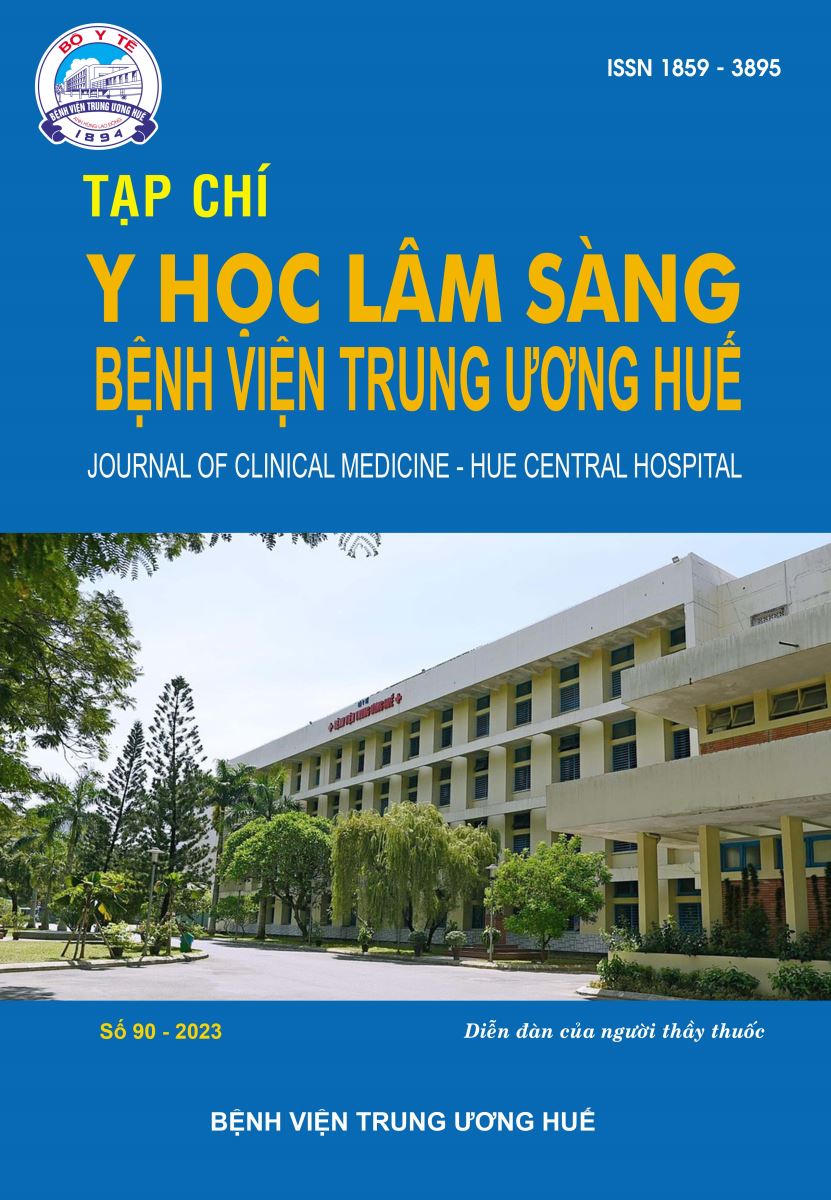Abstract
Background: Early - Onset Infection in Neonates (EOIN) is a disease with many difficulties in diagnosis, because symptoms of aforementioned disease are diverse, less specific, and can be encountered in non-infectious situations, leading to unnecessary antibiotic treatments. CRP and serum albumin are indicators of the presence and severity of neonatal sepsis. This study aims to understand the between CRP and serum albumin and the level of EOIN.
Methods: Newborns < 72 hours of age with suspected EOIN have at least 1 clinical symptom according to diagnostic criteria for EOIN of the Ministry of Health 2015. Evaluation of the EOIN level and taking CRP and serum albumin testing at the time of diagnosis.
Results: 90 patients with EOIN, including 18 cases of early-onset neonatal sepsis (EONS). Changes in serum albumin concentration accounted for the highest rate at 53.3%, followed by CRP at 37.8%. The rate of children with increased CRP in the EONS group (100%) was higher than the EOIN group (22.2%) (p < 0.05). The proportion of children with decreased serum albumin in the EONS group (77.8%) was higher than the EOIN group (47.2%) (p < 0.05). The median CAR in the EONS group (0.62) was higher than the EOIN group (0.11) (p < 0.05).
Conclusion: The combination between CRP and serum albumin is an independent predictor of the presence and severity of early-onset neonatal sepsis (EONS).
References
Iroh Tam PY, Bendel CM. Diagnostics for neonatal sepsis:
current approaches and future directions. Pediatr Res.
;82(4):574-583.
Yang C, Liu Z, Tian M. Relationship Between Serum
Albumin Levels and Infections in Newborn Late Preterm
Infants. Med Sci Monit. 2016;2292-8.
Li T, Li X, Wei Y. Predictive Value of C-Reactive Proteinto-Albumin Ratio for Neonatal Sepsis. J Inflamm Res.
;143207-3215.
Bộ Y tế, Nhiễm khuẩn sơ sinh. Hướng dẫn chẩn đoán
và điều trị các bệnh Sản Phụ khoa (Ban hành kèm theo
Quyết định số 315/QĐ-BYT ngày 29/01/2015. 2015.
234-39.
World Health Organization. Antibiotic Use for Sepsis
in Neonates and Children: 2016 Evidence Update. 2016
/9/2022]; 3 - 5]. Available from: https://www.who.int/
selection_medicines/committees/expert/21/applications/
s6_paed_antibiotics_appendix4_sepsis.pdf
Ahmed Z, Ghafoor T, Waqar T, Ali S, Aziz S, Mahmud S.
Diagnostic value of C- reactive protein and haematological
parameters in neonatal sepsis. J Coll Physicians Surg Pak.
;15(3):152-6.
El-Lahony DM, El-Sayed HM, Mostafa HM. Evaluation of
serum albumin level among preterm septicemic newborn
infants. Menoufia Med J. 2018. 201831:1018-1022.
Yang C, Yang Y, Li B. The diagnostic value of highsensitivity C-reactive protein/albumin ratio in evaluating
early-onset infection in premature. Zhonghua Wei Zhong
Bing Ji Jiu Yi Xue. 2016;28(2):173-7.
Gyawali P, Shrestha H, Pant V. C-reactive Protein to Albumin
Ratio among Patients Admitted to Intensive Care Unit of a
Tertiary Care Hospital: A Descriptive Crosssectional Study.
JNMA J Nepal Med Assoc. 2021;59(244):1247-1251.
Kim MH, Ahn JY, Song JE. The C-Reactive Protein/Albumin
Ratio as an Independent Predictor of Mortality in Patients
with Severe Sepsis or Septic Shock Treated with Early
Goal-Directed Therapy. PLoS One. 2015;10(7):e0132109.
Yu Y, Wu W, Dong Y. C-Reactive Protein-to-Albumin Ratio
Predicts Sepsis and Prognosis in Patients with Severe Burn
Injury. Mediators Inflamm. 2021;20216621101.
| Published | 28-12-2024 | |
| Fulltext |
|
|
| Language |
|
|
| Issue | No. 90 (2023) | |
| Section | Original article | |
| DOI | 10.38103/jcmhch.90.11 | |
| Keywords |

This work is licensed under a Creative Commons Attribution-NonCommercial-NoDerivatives 4.0 International License.
Copyright (c) 2023 Journal of Clinical Medicine Hue Central Hospital

